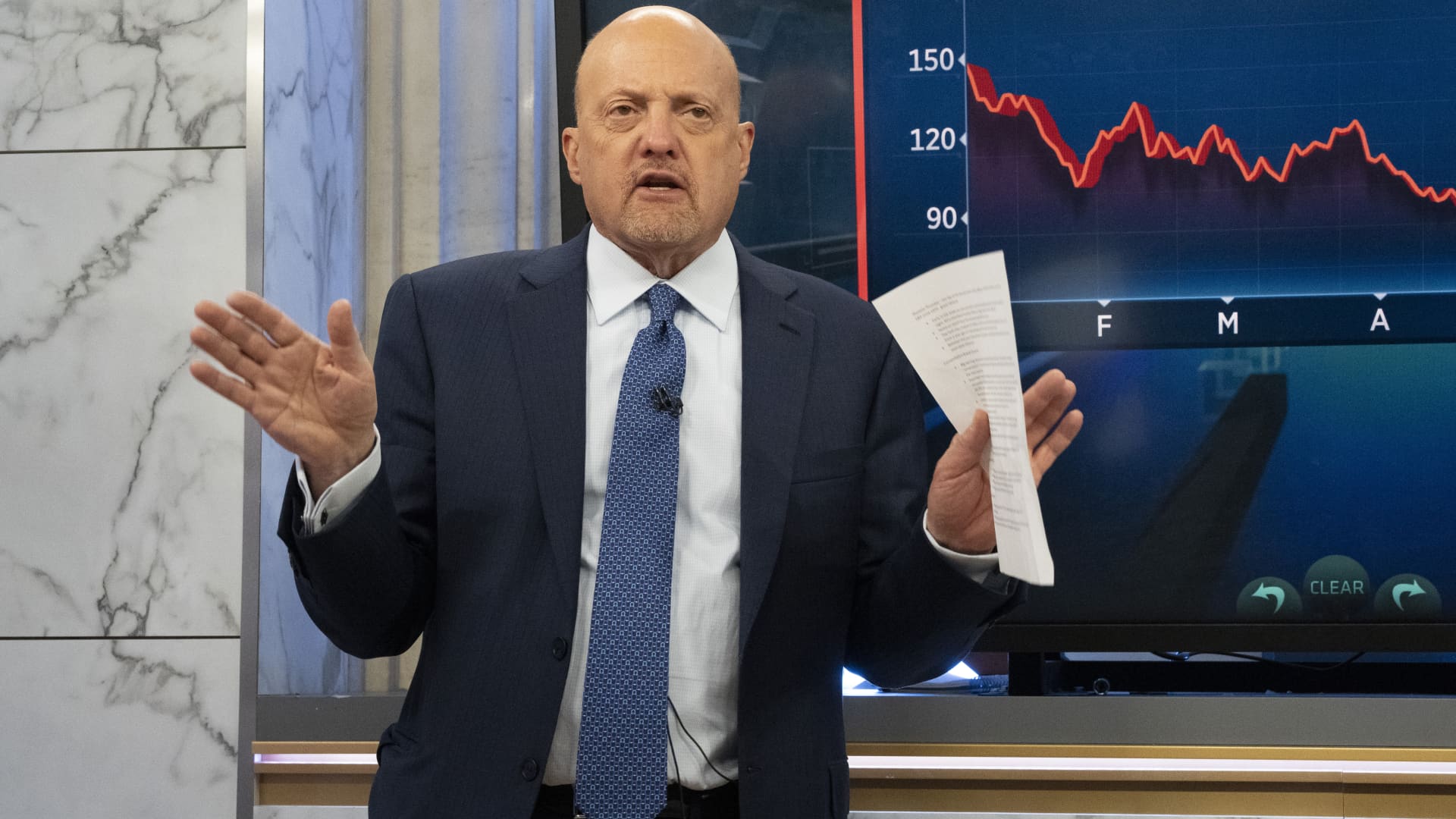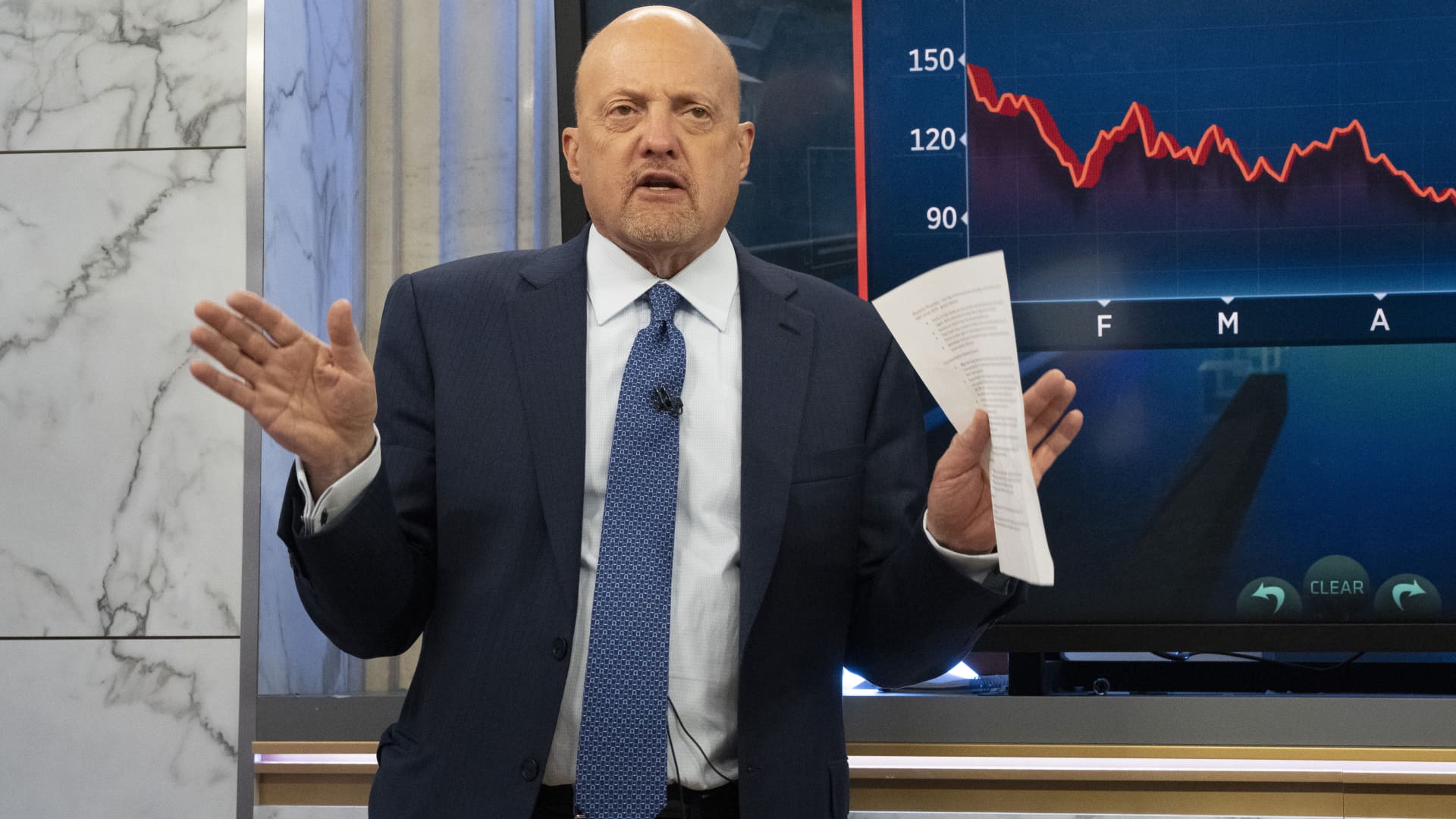The Evolving Investment Landscape: Jim Cramer’s Shifting Stance and GE Vernova’s Rise
Introduction: The Ever-Changing Financial Terrain
The financial world is a dynamic ecosystem, constantly reshaped by technological innovation, economic indicators, and the fluctuating sentiments of market participants. Among the most influential voices in this arena is Jim Cramer, the charismatic host of CNBC’s “Mad Money.” Recently, Cramer has made headlines not only for his insights into specific companies but also for a surprising reversal on meme stocks and his bullish stance on GE Vernova (GEV). This report explores the factors driving these shifts, examining the underlying market forces and potential implications for investors.
The Meme Stock Metamorphosis: From Skepticism to Sympathy
For years, Jim Cramer has been a vocal critic of meme stocks, those volatile assets whose prices are driven more by social media hype than by fundamental financial metrics. He often cautioned investors against the risks associated with these speculative investments, emphasizing the importance of sound analysis and long-term value. However, recent reports indicate a significant change in his perspective, advising hedge funds to exit short positions in certain meme stocks, such as Kohl’s.
Institutional Shifts towards “Cold” Stocks
Cramer’s shift aligns with broader market trends. As the initial fervor surrounding meme stocks cools down, institutional investors are increasingly focusing on companies with stable earnings and long-term growth potential – assets often dubbed “cold” stocks. This shift reflects a renewed emphasis on fundamental analysis and risk management, moving away from the speculative frenzy that characterized the meme stock craze of 2021. The underlying conditions that fueled that frenzy—low interest rates and high retail investor engagement—have largely dissipated, making meme stocks less attractive to institutional investors.
The Short Squeeze Potential
Cramer’s specific advice to back off short positions in Kohl’s suggests an awareness of the potential for a short squeeze. A short squeeze occurs when a heavily shorted stock experiences a sudden surge in price, forcing short sellers to cover their positions by buying back shares, further driving up the price. By warning short sellers to exit, Cramer may be anticipating or even attempting to trigger such a squeeze, potentially benefiting retail investors who hold the stock.
Acknowledging Market Realities
While fundamentals remain crucial, completely dismissing the power of social sentiment in today’s market would be imprudent. Perhaps Cramer acknowledges that some meme stocks, even those with questionable fundamentals, can experience periods of outperformance due to coordinated buying activity. By recognizing this dynamic, he might be aiming to provide more nuanced and timely advice to his audience.
Relevance and Ratings
It’s also worth considering the media landscape. Cramer’s pronouncements are closely followed, and his willingness to adapt to changing market narratives ensures his continued relevance and viewership. A dramatic reversal on a controversial topic like meme stocks is bound to generate attention, which can be beneficial for his show’s ratings.
Cramer’s evolving stance on meme stocks highlights the complexities of navigating today’s market. While he continues to advocate for fundamental investing, he appears to be acknowledging the potential impact of social sentiment and short-term trading dynamics.
GE Vernova’s Ascent: Riding the Wave of Secular Trends
While Cramer has tempered his skepticism toward meme stocks, he has expressed strong conviction in the prospects of GE Vernova (GEV), a company focused on energy transition. He has gone as far as to say “I’m High on GE Vernova” and “That’s the one.” This bullish outlook is rooted in the belief that GEV is positioned to benefit from several powerful “secular trends” – long-term, structural shifts in the global economy.
The Energy Transition Imperative
The global push towards decarbonization and renewable energy is creating a massive demand for technologies and services that support the energy transition. GE Vernova is a key player in this space, offering a range of products and solutions for power generation, electrification, and energy management. As governments and businesses worldwide commit to reducing their carbon footprint, GEV stands to benefit from increased investment in renewable energy infrastructure and grid modernization.
AI and Data Centers
The explosive growth of artificial intelligence (AI) is driving a surge in demand for data centers, which require massive amounts of energy. GE Vernova is well-positioned to provide the power generation and grid infrastructure solutions needed to support this growth. Cramer has emphasized the significant role that GE Vernova plays in powering AI data centers, highlighting its potential to capitalize on this rapidly expanding market.
Global Infrastructure Development
Many countries are investing heavily in infrastructure development to support economic growth and improve living standards. This includes investments in power grids, transportation systems, and industrial facilities, all of which require the types of products and services offered by GE Vernova. The company’s global presence and expertise in power generation and electrification make it a valuable partner for these infrastructure projects.
Earnings and Revenue Beat Estimates
News articles indicate that GE Vernova’s earnings and revenue have recently exceeded expectations, further bolstering confidence in the company’s performance and growth prospects. These positive financial results provide tangible evidence that GEV is successfully executing its strategy and capitalizing on the opportunities presented by the energy transition.
Cramer’s enthusiasm for GE Vernova reflects a broader recognition of the transformative potential of the energy transition and the growing importance of sustainable technologies. As the world moves towards a cleaner energy future, companies like GEV are poised to play a central role.
Market Forces at Play: Inflation, Trade, and Investor Sentiment
While individual stock picks and investment strategies are important, it’s essential to consider the broader market forces that influence overall investment performance. Several key factors are currently shaping the financial landscape:
Inflation and Interest Rates
Inflation has been a major concern for investors in recent years, prompting central banks around the world to raise interest rates in an effort to curb price increases. While inflation has slowed down recently, it remains above target levels in many countries. The trajectory of inflation and interest rates will continue to be a key driver of market performance, influencing corporate earnings, bond yields, and investor sentiment.
Trade Tensions
Trade tensions between the U.S. and China, as well as other countries, have added uncertainty to the global economy. Trade disputes can disrupt supply chains, raise costs for businesses, and dampen economic growth. Investors are closely monitoring trade negotiations and policy developments to assess the potential impact on their portfolios.
Geopolitical Risks
Geopolitical events, such as the ongoing war in Ukraine and rising tensions in other regions, can also have a significant impact on financial markets. These events can disrupt supply chains, increase commodity prices, and create uncertainty for investors.
Investor Sentiment
Investor sentiment plays a crucial role in shaping market trends. Positive sentiment can drive up stock prices, while negative sentiment can trigger sell-offs. Factors such as economic data, corporate earnings, and geopolitical events can all influence investor sentiment.
Conclusion: Adaptability in a Dynamic Landscape
The financial markets are a complex and ever-changing ecosystem. Jim Cramer’s recent shifts in perspective on meme stocks and his bullish stance on GE Vernova reflect the need for investors to adapt to evolving market dynamics. While fundamental analysis remains crucial, it’s also important to be aware of the impact of social sentiment, technological advancements, and macroeconomic forces. Ultimately, successful investing requires a combination of knowledge, discipline, and a willingness to learn and adapt to the changing landscape. The key takeaway is to remain informed, adaptable, and focused on long-term value creation. The market’s currents will always shift, but a well-prepared investor can navigate these changes and chart a course towards financial success.












